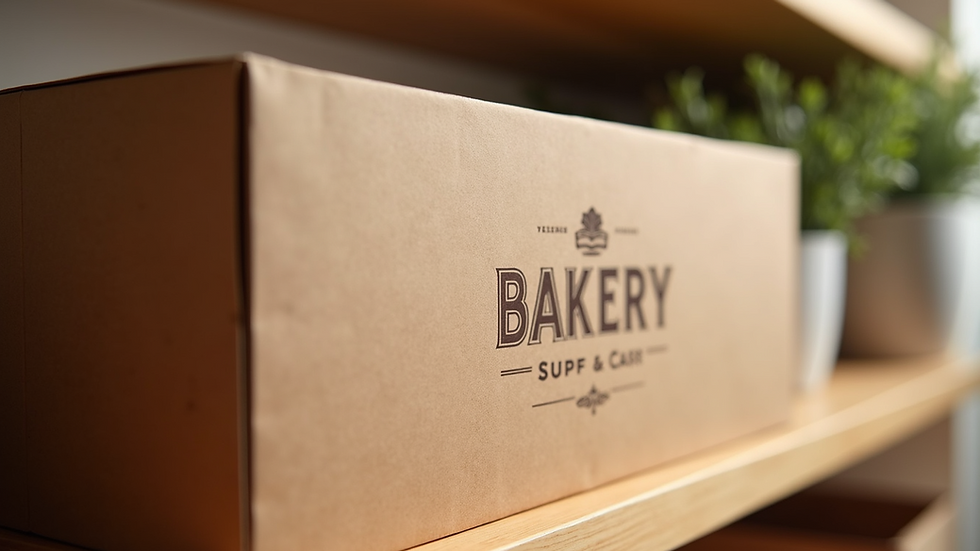How to Open and Run a Successful Restaurant | Horeca Stop
- Reo ramarajan
- Jun 15, 2024
- 3 min read
Starting a restaurant is a dream for many, but turning that dream into a successful reality requires more than just a great recipe. In this blog, we break down a comprehensive YouTube video by Wilson, a successful restaurateur, who shares his top three steps for opening and running a successful restaurant. Whether you're just starting or looking to elevate your current restaurant, these insights will provide you with a solid foundation to thrive in the competitive food and beverage industry.
Focus on Framework:
Wilson emphasizes that this video isn't about the minutiae like permits or contracts, but rather about the overarching framework that leads to success. This framework includes actionable steps that you can implement immediately to see tangible results. If you're interested in detailed tactics and strategies, Wilson encourages you to subscribe to his channel for future updates.

Step 1: Location, Location, Location
The first and perhaps most crucial step in opening a successful restaurant is choosing the right location. Wilson stresses that location can make or break your restaurant. Here are the key points to consider:
Community Alignment:
Choose a community that aligns with your target customers.
Spend time in potential areas to observe if the demographics and foot traffic match your restaurant concept.
Competitor Analysis:
Visit competitor restaurants to understand their customer base and service methods.
Identify gaps in the market that your restaurant can fill.
Foot Traffic Analysis:
Use a clicker to count the number of people passing by potential locations.
Log this data hourly to determine peak times and slow periods.
Use this information to negotiate better lease terms with landlords.
Avoid Impulsiveness:
Do not rush into signing long-term leases without thorough research.
Ensure the location provides the best chance of success based on traffic data and community fit.
Wilson also provides a template for logging foot traffic, which you can download from the video description. This hands-on approach ensures you make an informed decision about your restaurant's location.
Step 2: Know Your Numbers
Understanding your financial metrics is vital to avoid business failure. Wilson shares his personal experience of being audited and fined due to poor financial management. He highlights the importance of knowing and managing three key financial metrics:
Rental Costs:
Should not exceed 15% of your projected revenue.
For example, if your projected monthly revenue is $50,000, your rent should be no more than $7,500.
Food Costs:
Should be kept at or below 30% of revenue.
This includes the cost of ingredients, labor for food preparation, delivery charges, and takeout supplies.
For a $50,000 revenue, food costs should be no more than $15,000.
Labor Costs:
Should also be capped at 30% of revenue.
This includes wages for servers, cashiers, janitors, managers, and even your own salary as the owner.
For the same $50,000 revenue, labor costs should not exceed $15,000.
Wilson provides practical tips for managing these costs, such as reducing spoilage, preventing theft, optimizing delivery schedules, and implementing efficient staffing strategies. By adhering to these financial guidelines, you can ensure your restaurant remains profitable and sustainable.
Step 3: Connect with Your Team and Customers
The final step focuses on the human element of running a restaurant. Wilson emphasizes the importance of building strong relationships with both your team and your customers:
Team Building:
Always support your team when they are doing the right thing.
Clearly communicate your vision and values to your team.
Invest in their development and back them up, creating a loyal and motivated workforce.
Customer Connection:
Understand what your customers value and tailor their dining experience accordingly.
Determine if your restaurant is aimed at being a lively hangout, a romantic spot, or a family-friendly environment.
Providing a specific and consistent experience will help attract and retain loyal customers.
Wilson points out that a strong team and satisfied customers are the backbone of a successful restaurant. By prioritizing these relationships, you can build a restaurant that runs smoothly and provides a memorable experience for everyone involved.
In summary, Wilson's three-step framework for opening and running a successful restaurant includes choosing the right location, knowing your financial numbers, and connecting with your team and customers. These steps, based on his personal experience of growing an ice cream shop into an international chain, provide a solid foundation for any aspiring restaurateur
About Us
Horeca Stop is a B2B startup, building a one-stop Omni-channel platform to solve the procurement problem of the Hospitality Industry by Ecommerce and SAAS. Horeca stop is automating the procurement process in F&B Industry and Provides a unique end-to-end Solution of vendor management, inventory management, distribution management, logistics management, and product sourcing and work as an e-procurement manager for your brand.




Comments